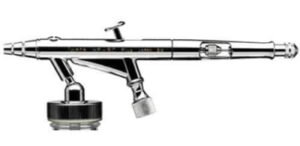One essential part of your model ships fittings is the receiver, which takes the radio waves from your transmitter and converts them into electronic signals for the operation of your speed controller and servos.
Keeping things simple there’s two types of receivers, one for the older type of transmitters 27MHz or 40MHz, and the newer 2.4GHz equipment.
All receivers will have a row of pins where you connect the power supply, servos, speed controllers, etc. These will normally be marked B for battery connection, or a numeral representing the channel number. The correspondence of a channel number and the transmitter control function is not standardised and will depend on the make of the transmitter.
Servo connectors are often polarised so that they will only fit one way round. Unfortunately, different manufacturers use different polarising system so you can not rely on this. Double check the receiver markings when you are plugging the lead in ensuring that its the right way round.
If in doubt check the instructions, or contact your local supplier.
Never shorten or modify the aerial leads. The length of the aerial is critical as they are tuned to the transmitter frequency band. For 2.4GHz receivers with two antennae, these should be installed so that the thinner active parts at the end are positioned at right angles to one another. Since the antennae are small, the receiver should be positioned so that reception is not masked by a metal object, such as the battery or motor.
With the 27MHz or 40MHz sets, the positioning of the antenna affects the range of the receiver. Since with model boats we are not usually bothered with range considerations, some liberties can be taken with the installation as an optimum installation will give an “out of sight” range.
Always do a range check (with the transmitter aerial retracted) before the first voyage to check that it works. If the check gives you a range of better than 10 yards, it will be satisfactory on the pond with the transmitter aerial extended.
Keep it dry!
Ensure you keep the receiver dry, put it in a polythene bag or other form of water resistant housing, making sure its well secured.
As always if you are in doubt check the instructions, or contact your local supplier.




